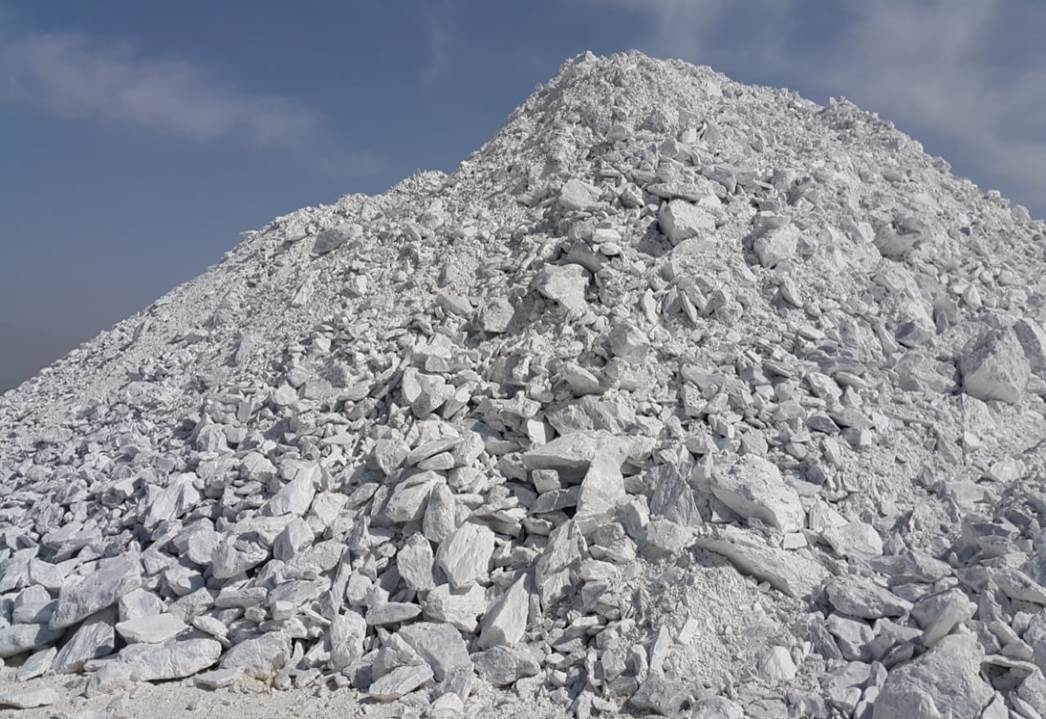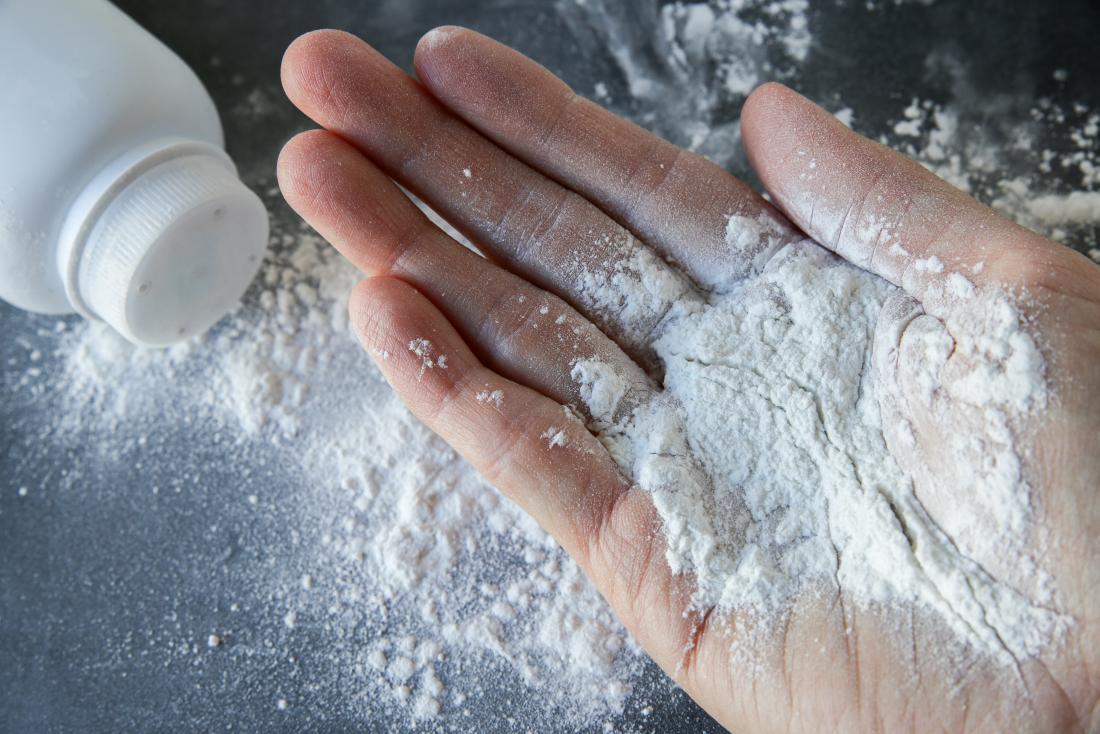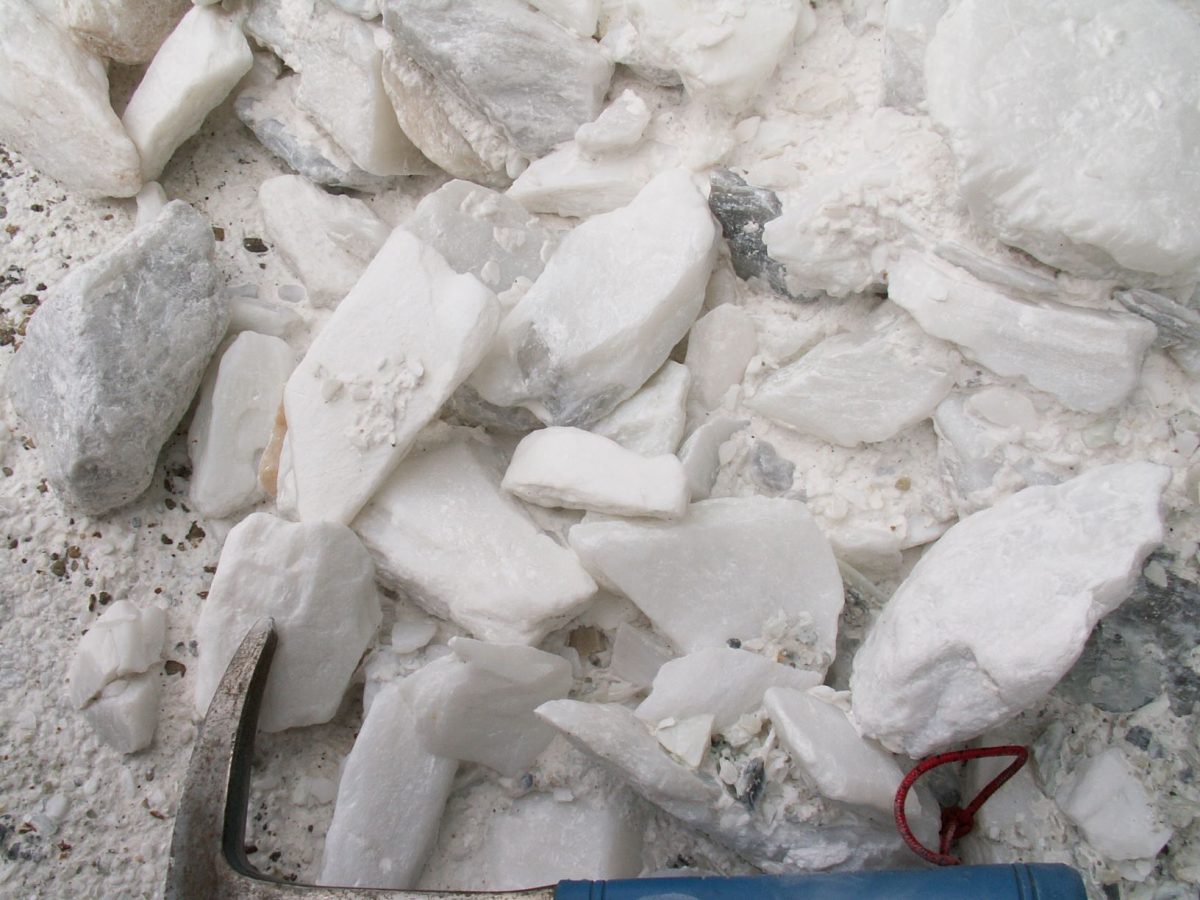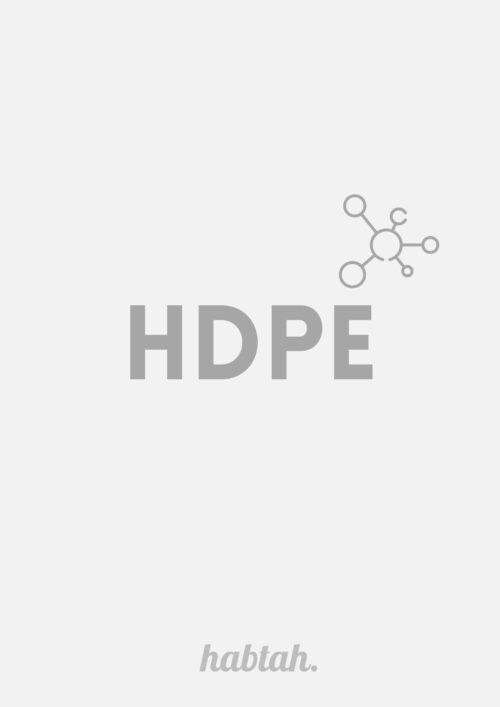Description
Talc, or talcum, is a clay mineral, composed of hydrated magnesium silicate with the chemical formula Mg3Si4O10(OH)2. Talc in powdered form, often combined with corn starch, is used as baby powder. This mineral is used as a thickening agent and lubricant. It is an ingredient in ceramics, paint, and roofing material. It is the main ingredient in many cosmetics. It occurs as foliated to fibrous masses, and in an exceptionally rare crystal form. It has perfect basal cleavage and an uneven flat fracture, and it is foliated with a two-dimensional platy form.
The Mohs scale of mineral hardness, based on scratch hardness comparison, defines value 1 as the hardness of talc, the softest mineral. When scraped on a streak plate, talc produces a white streak; though this indicator is of little importance, because most silicate minerals produce a white streak. Talc is translucent to opaque, with colors ranging from whitish-grey to green with a vitreous and pearly luster. Talc is not soluble in water and is slightly soluble in dilute mineral acids.
Soapstone is a metamorphic rock composed predominantly of talc.
Specs
| Powder | Rock | |||
| Grade | A | B | A | B |
| Mesh | 325-2000 | |||
| Packing | 25kg polyethylene bags | 25kg polyethylene bags | 1000 kg Big Bags | 1000 kg Big Bags |
| Characteristics | 97% whiteness | 97% whiteness | ||
| Other |
70% rock 30% powder |
70% rock 30% powder |
||
Use
Talc is used in many industries, including paper making, plastic, paint and coatings (e.g. for metal casting molds), rubber, food, electric cable, pharmaceuticals, cosmetics, and ceramics. A coarse grayish-green high-talc rock is soapstone or steatite, used for stoves, sinks, electrical switchboards, etc. It is often used for surfaces of laboratory table tops and electrical switchboards because of its resistance to heat, electricity, and acids.
In finely ground form, Talc finds use as a cosmetic (talcum powder), as a lubricant, and as a filler in paper manufacture. It is used to coat the insides of inner tubes and rubber gloves during manufacture to keep the surfaces from sticking. Talcum powder, with heavy refinement, has been used in baby powder, an astringent powder used to prevent diaper rash (nappy rash). The American Academy of Pediatrics recommends that parents avoid using baby powder because it poses a risk of respiratory problems, including breathing trouble and serious lung damage if inhaled. The small size of the particles makes it difficult to keep them out of the air while applying the powder. Zinc oxide-based ointments are a much safer alternative.
Soapstone (massive talc) is often used as a marker for welding or metalworking.
Talc is also used as a food additive or in pharmaceutical products as a glidant. In medicine, talc is used as a pleurodesis agent to prevent recurrent pleural effusion or pneumothorax. In the European Union, the additive number is E553b.
Talc may be used in the processing of white rice as a buffing agent in the polishing stage.
Due to its low shear strength, talc is one of the oldest known solid lubricants. Also, limited use of talc as a friction-reducing additive in lubricating oils is made.
Talc is widely used in the ceramics industry in both bodies and glazes. In low-fire art-ware bodies, it imparts whiteness and increases thermal expansion to resist crazing. In stonewares, small percentages of talc are used to flux the body and therefore improve strength and vitrification. It is a source of MgO flux in high-temperature glazes (to control melting temperature). It is also employed as a matting agent in earthenware glazes and can be used to produce magnesia mattes at high temperatures.
ISO standard for quality (ISO 3262)
| Type | Talc content min. wt% | Loss on ignition at 1000 °C, wt % | Solubility in HCl, max. wt % |
|---|---|---|---|
| A | 95 | 4 – 6.5 | 5 |
| B | 90 | 4–9 | 10 |
| C | 70 | 4–18 | 30 |
| D | 50 | 4–27 | 30 |
Patents are pending on the use of magnesium silicate as a cement substitute. Its production requirements are less energy-intensive than ordinary Portland cement (at a heating requirement of around 650 °C for talc compared to 1500 °C for limestone to produce Portland cement), while it absorbs far more carbon dioxide as it hardens. This results in a negative carbon footprint overall, as the cement substitute removes 0.6 tonnes of CO2 per tonne used. This contrasts with a positive carbon footprint of 0.4 tonnes per tonne of conventional cement.
Talc is used in the production of materials that are widely used in the building interiors such as base content paints in wall coatings. Other areas that use talc to a great extent are organic agriculture, the food industry, cosmetics, and hygiene products such as baby powder and detergent powder.





Reviews
There are no reviews yet.